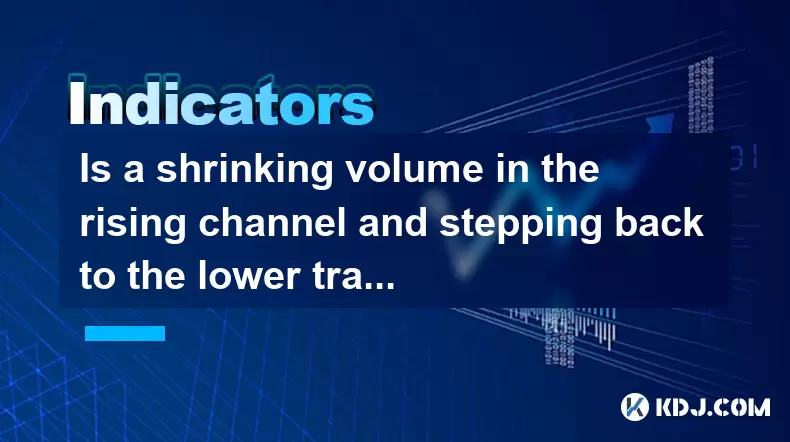-
 Bitcoin
Bitcoin $108,092.5658
-0.99% -
 Ethereum
Ethereum $2,546.4530
-1.12% -
 Tether USDt
Tether USDt $1.0000
0.01% -
 XRP
XRP $2.2676
0.12% -
 BNB
BNB $659.1616
-0.30% -
 Solana
Solana $148.8297
-1.97% -
 USDC
USDC $1.0000
0.02% -
 TRON
TRON $0.2874
-0.30% -
 Dogecoin
Dogecoin $0.1676
-3.64% -
 Cardano
Cardano $0.5765
-1.73% -
 Hyperliquid
Hyperliquid $37.2069
-6.18% -
 Bitcoin Cash
Bitcoin Cash $497.9918
-0.10% -
 Sui
Sui $2.8427
-2.26% -
 Chainlink
Chainlink $13.2689
-2.06% -
 UNUS SED LEO
UNUS SED LEO $9.0541
0.15% -
 Stellar
Stellar $0.2487
-0.92% -
 Avalanche
Avalanche $17.7710
-3.09% -
 Shiba Inu
Shiba Inu $0.0...01167
-1.28% -
 Toncoin
Toncoin $2.7488
-2.80% -
 Hedera
Hedera $0.1559
-2.28% -
 Litecoin
Litecoin $85.8945
-2.48% -
 Monero
Monero $316.0985
-2.09% -
 Dai
Dai $1.0001
0.02% -
 Polkadot
Polkadot $3.3481
-1.83% -
 Ethena USDe
Ethena USDe $1.0000
0.00% -
 Bitget Token
Bitget Token $4.2910
-3.04% -
 Uniswap
Uniswap $7.4131
-0.09% -
 Aave
Aave $280.9266
-2.67% -
 Pepe
Pepe $0.0...09816
-3.18% -
 Pi
Pi $0.4557
-2.29%
Is a shrinking volume in the rising channel and stepping back to the lower track a point to add positions?
Jul 08, 2025 at 02:07 pm

Understanding the Rising Channel Pattern
A rising channel is a technical analysis pattern commonly observed in cryptocurrency price charts. It consists of two parallel trendlines: an upper resistance line and a lower support line, both sloping upwards. Prices typically oscillate between these two boundaries. Traders often use this pattern to identify potential entry and exit points. In a healthy rising channel, volume usually increases as prices approach the lower boundary before bouncing back upward.
Key Concept: A rising channel indicates bullish momentum but also temporary pullbacks within an uptrend.
When prices are consistently touching the lower rail and rebounding, it signals strong buying interest. However, when volume begins to shrink during such movements, traders may question whether this is still a valid opportunity to add positions or if it signals weakening momentum.
Volume Dynamics Within a Rising Channel
Volume plays a crucial role in confirming the strength of any price movement. In a typical rising channel, increasing volume on upward moves confirms the continuation of the trend, while decreasing volume can hint at waning buyer enthusiasm. When volume contracts during a retracement to the lower rail, it raises concerns about the sustainability of the trend.
Important Note: Shrinking volume does not automatically invalidate the rising channel but should be interpreted alongside other indicators like RSI, MACD, or candlestick patterns.
In some cases, especially during consolidation phases, volume naturally decreases. This could mean that the market is taking a pause rather than reversing. The key is to observe whether the lower boundary continues to act as support despite the low volume.
Interpreting a Pullback to the Lower Rail
A retest of the lower rail in a rising channel is often viewed as a potential buying opportunity, particularly if historical data shows that price has bounced from that level multiple times. However, when this occurs with shrinking volume, it introduces uncertainty.
- Historical Behavior: Check how many times the price has touched the lower rail previously and what kind of volume accompanied those touches.
- Price Action Confirmation: Look for bullish candlestick formations (like hammers, engulfing candles) near the lower rail to confirm potential reversals.
- Trendline Integrity: Ensure that the lower rail hasn’t been decisively broken, which would invalidate the channel pattern.
If the price finds support at the lower rail even with reduced volume, it might suggest that sellers are not strong enough to push the price further down, which could be a green light for adding long positions cautiously.
Combining Volume Analysis with Other Indicators
Relying solely on volume and price action can be misleading. Integrating additional tools enhances the accuracy of trade decisions. For example:
- Relative Strength Index (RSI): If RSI is above 50 and starts rising after touching the lower rail, it suggests bullish strength despite low volume.
- Moving Averages: Check if short-term moving averages like the 20 EMA are still sloping upward and acting as dynamic support.
- Fibonacci Retracement Levels: Align the current pullback with key Fibonacci levels to assess its depth relative to prior swings.
These combined signals provide a more robust framework for evaluating whether a position should be added or avoided during a low-volume bounce off the lower rail.
Risk Management Considerations
Even if all signs seem favorable, prudent risk management must accompany any trading decision. Entering a position based on a shrinking volume bounce requires careful planning:
- Set Tight Stop-Loss Levels: Place stop-loss just below the lower rail to contain losses if the support fails.
- Position Sizing: Reduce exposure size due to the uncertainty associated with low volume.
- Trailing Profits: If the price resumes the uptrend, trail stops to lock in gains incrementally.
Risk-reward ratios should remain favorable. For instance, if entering at the lower rail, aim for a target near the upper rail with a stop placed just below the support zone.
Frequently Asked Questions
Q1: Can I rely solely on volume to make trading decisions in a rising channel?
No, volume should never be used in isolation. Combine it with price action, trendlines, and other technical indicators to improve reliability and reduce false signals.
Q2: What if the price breaks below the lower rail with high volume?
A breakdown with high volume typically signals a strong bearish shift. In that case, the rising channel is invalidated, and traders should reassess the trend direction.
Q3: How do I differentiate between a normal consolidation and a reversal in a rising channel?
Look for changes in volume behavior, candlestick patterns, and breaches of key support levels. A reversal often includes increased volatility, failed bounces, and bearish divergence in momentum indicators.
Q4: Is it safe to add positions near the lower rail in a rising channel with high volume?
High volume near the lower rail usually confirms strong demand, making it a safer entry point compared to low-volume scenarios. However, always verify with other confirmation tools and manage risk accordingly.
Clause de non-responsabilité:info@kdj.com
Les informations fournies ne constituent pas des conseils commerciaux. kdj.com n’assume aucune responsabilité pour les investissements effectués sur la base des informations fournies dans cet article. Les crypto-monnaies sont très volatiles et il est fortement recommandé d’investir avec prudence après une recherche approfondie!
Si vous pensez que le contenu utilisé sur ce site Web porte atteinte à vos droits d’auteur, veuillez nous contacter immédiatement (info@kdj.com) et nous le supprimerons dans les plus brefs délais.
-
 ICNT Échangez maintenant
ICNT Échangez maintenant$0.3182
30.31%
-
 M Échangez maintenant
M Échangez maintenant$0.2011
23.43%
-
 SOLO Échangez maintenant
SOLO Échangez maintenant$0.3788
17.55%
-
 HSK Échangez maintenant
HSK Échangez maintenant$0.7010
17.49%
-
 SHX Échangez maintenant
SHX Échangez maintenant$0.0116
15.42%
-
 COREUM Échangez maintenant
COREUM Échangez maintenant$0.1392
8.59%
- Bitcoin Solaris Market Launch: A New Dawn or Just Another Altcoin?
- 2025-07-08 20:30:12
- Bitcoin, Memecoin Mania, and the All-Time High Hunt: What's Next?
- 2025-07-08 20:30:12
- Byrq Coin: Scam or Savior? A Deep Dive Review
- 2025-07-08 20:50:12
- Shiba Inu's Burn Rate Bonanza: Can Crypto Burns Ignite a Price Rally?
- 2025-07-08 20:50:12
- XLM Price Prediction: Is Stellar Ready for a Breakout?
- 2025-07-08 19:10:13
- Memecoin Mania: V2EX, Pump.fun, and the Wild West of Crypto
- 2025-07-08 19:50:12
Connaissances connexes

How to trade Dogecoin based on funding rates and open interest
Jul 07,2025 at 02:49am
<h3>Understanding Funding Rates in Dogecoin Trading</h3><p>Funding rates are periodic payments made to either long or short traders ...

What is the 'God Mode' indicator for Dogecoin
Jul 07,2025 at 04:42pm
<h3>Understanding the 'God Mode' Indicator</h3><p>The 'God Mode' indicator is a term that has emerged within cryptocurrency trading ...

Using Gann Fans on the Dogecoin price chart
Jul 07,2025 at 09:43pm
<h3>Understanding Gann Fans and Their Relevance in Cryptocurrency Trading</h3><p>Gann Fans are a technical analysis tool developed b...

How to spot manipulation on the Dogecoin chart
Jul 06,2025 at 12:35pm
<h3>Understanding the Basics of Chart Manipulation</h3><p>Chart manipulation in the cryptocurrency space, particularly with Dogecoin...

Dogecoin market structure break explained
Jul 07,2025 at 02:51am
<h3>Understanding the Dogecoin Market Structure</h3><p>Dogecoin, initially created as a meme-based cryptocurrency, has evolved into ...

How to backtest a Dogecoin moving average strategy
Jul 08,2025 at 04:50am
<h3>What is a Moving Average Strategy in Cryptocurrency Trading?</h3><p>A moving average strategy is one of the most commonly used t...

How to trade Dogecoin based on funding rates and open interest
Jul 07,2025 at 02:49am
<h3>Understanding Funding Rates in Dogecoin Trading</h3><p>Funding rates are periodic payments made to either long or short traders ...

What is the 'God Mode' indicator for Dogecoin
Jul 07,2025 at 04:42pm
<h3>Understanding the 'God Mode' Indicator</h3><p>The 'God Mode' indicator is a term that has emerged within cryptocurrency trading ...

Using Gann Fans on the Dogecoin price chart
Jul 07,2025 at 09:43pm
<h3>Understanding Gann Fans and Their Relevance in Cryptocurrency Trading</h3><p>Gann Fans are a technical analysis tool developed b...

How to spot manipulation on the Dogecoin chart
Jul 06,2025 at 12:35pm
<h3>Understanding the Basics of Chart Manipulation</h3><p>Chart manipulation in the cryptocurrency space, particularly with Dogecoin...

Dogecoin market structure break explained
Jul 07,2025 at 02:51am
<h3>Understanding the Dogecoin Market Structure</h3><p>Dogecoin, initially created as a meme-based cryptocurrency, has evolved into ...

How to backtest a Dogecoin moving average strategy
Jul 08,2025 at 04:50am
<h3>What is a Moving Average Strategy in Cryptocurrency Trading?</h3><p>A moving average strategy is one of the most commonly used t...
Voir tous les articles

























































































